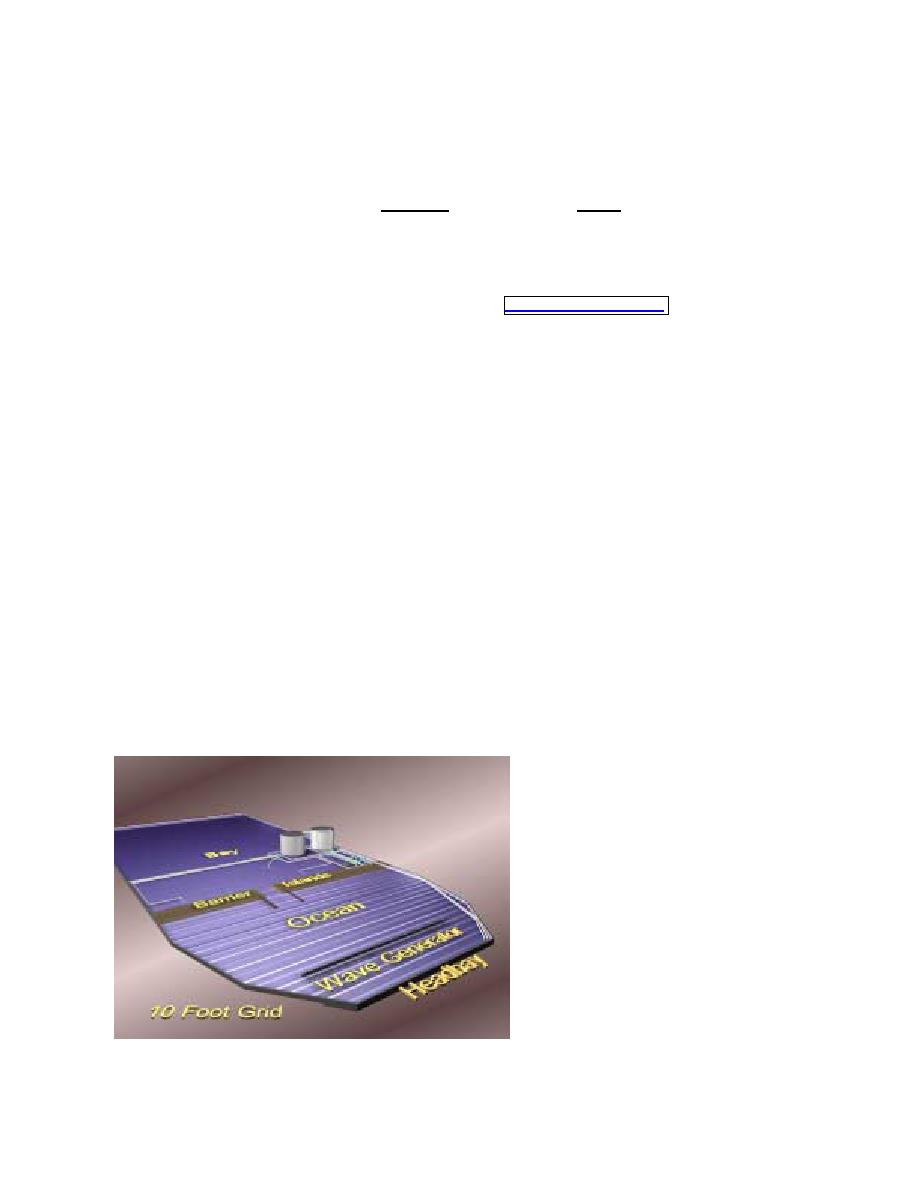Abstract submitted to Waves 2001
Physical Modeling Session
ASCE
WAVE SCALING IN A TIDAL INLET MODEL
William C. Seabergh and Jane McKee Smith
U.S. Army Engineer Research and Development Center
Vicksburg, MS 39180-6199.
(601) 634-3788; fax: (601) 634-3433;
INTRODUCTION
As part of the Corps of Engineers' Coastal Inlets Research Program, laboratory experiments were
conducted to measure wave breaking on an ebb shoal for a typical dual-jettied tidal inlet. The objective
was to provide information to parameterize breaking for numerical wave transformation models. The
modeling test basin contained an inlet configuration that included ocean, inlet and bay regions (Figure 1).
The inlet was idealized in shape, with simple contours for the adjacent beach, ebb shoal, and inlet
channel. The inlet model could be considered approximately a 1:50 scale model, and this scale was
assumed for determining model parameters defining wave height and period based on typical field values.
The model wave heights ranged from 2 to 8 cm (which represented 1 to 4 m) and periods were 0.7 to 1.7
sec (which scaled 5- to 12-sec waves). Also, model ebb current speeds varied from 0 to 32 cm/sec. To
confirm the use of Froude scaling, the
experiments included a series of runs with
1.45 and 0.5 scaling factors (or 1:34 and
1:100 scales) of the original 1:50 scale.
The full model bathymetry was not altered
for the scale tests, but the model water
level was adjusted to give the correct
scaled depth on the shallowest portion of
Figure 1. Coastal Inlet Laboratory Facility
the ebb shoal, where the most intense






